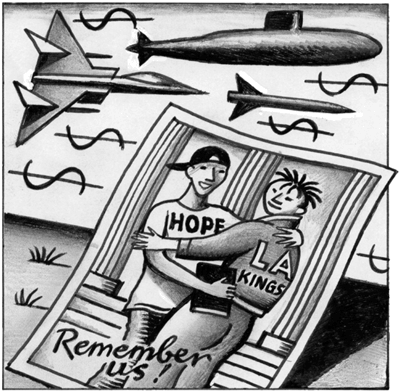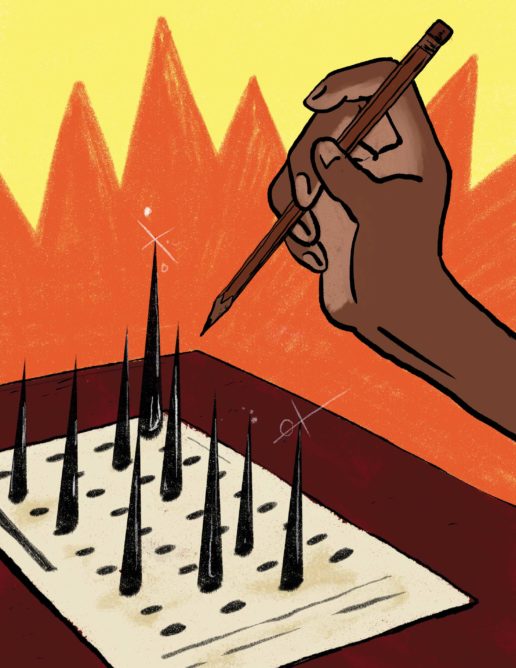Teaching Palestine
Palestine has long been one of the great silences in the official curriculum. Teaching Palestine: Lessons, Stories, Voices provides educators with powerful tools to uncover the history and current context […]

Palestine has long been one of the great silences in the official curriculum. Teaching Palestine: Lessons, Stories, Voices provides educators with powerful tools to uncover the history and current context […]

Christensen has students reimagine literature and their own stories to talk back to and disrupt injustice — and build solidarity.

Interrogating the recent Supreme Court decision ending affirmative action in college admissions, Au dismantles conservative arguments that pit Asian Americans against other people of color.

Black history is under attack — predictably by the right, and by the acquiescence of the College Board, a billion-dollar “non-profit” business. This is yet another example of the erasure […]

A teacher educator helps preservice teachers understand the history of how Mexican Americans have been racialized as Black and white at different times to keep them out of white schools.
The Association of Raza Educators implores you: open your scholarships to all students of Hispanic descent regardless of citizenship.

The strange and offensive history of Ten Little Indians” (Hint: They weren’t always called “Indians.”)
“

This content is restricted to subscribers

A math educator brings data from a friend’s solar panels — and the story to win them in their community — into her 7th-grade classroom to build a bridge between math and climate justice education.

A 3rd-grade teacher uses thousands of pieces of macaroni to facilitate a lesson about fractions and to spur classroom conversations about wealth inequality.

Death happens regularly, but a special education teacher describes her own mother’s death to show how schools leave no space for grief and try to hide death from the school community.

High-stakes tests have not only failed to achieve racial equality in schooling, they’ve also made it worse for students of color.

In late January, authorities at the Danville Correctional Center in east-central Illinois removed more than 200 titles from the prison’s library. One of the books that was confiscated was the Rethinking Schools book Rethinking Our Classrooms: Teaching for Equity and Justice, first published in 1994 and edited by Bill Bigelow, Linda Christensen, Stan Karp, Barbara Miner, and Bob Peterson.

“Part of the work of teaching students to read is teaching them to question not only the written word, but also the author,” Christensen writes in her article about teaching students how to confront writers whose stories erase the full truth and misrepresent people and places.

The largest civil rights protest wasn’t in the South, it was in New York City in 1964 when hundreds of thousands of students stayed home to protest school segregation. Here’s how today’s students reacted to a lesson about this historic boycott.

An elementary teacher who helped organize Arizona educators to strike explains how their movement formed and operated, and how it can inspire other teachers’ movements.

The director of a world language teacher preparation program argues for an end to the edTPA because it bars native Spanish speakers from public school classrooms.

A teacher of color writes about obstacles he faced during his first year in the classroom and the support he received — and did not receive — from other teachers and administrators.

There are few public schools receiving as much attention these days as LeBron James’ I Promise School in Akron, Ohio — and it’s because it’s just that: a public school.

Union activists have been tirelessly organizing with communities, recognizing that these are the same stories of communities across the United States. The fight will go on, even as disaster capitalism on steroids wants to destroy the public education system.

Janice Jackson interviews Rethinking Schools editor Wayne Au about the failure of Bill Gates’ educational initiatives.
The ongoing, persistent verbal and physical violence against women, youth, and LGBTQ communities has not been adequately addressed in most schools. Instead of educating children and youth about gender equity and sexual harassment, schools often create a culture that perpetuates stigma, shame, and silence. Student-on-student sexual assault and harassment occurs on playgrounds, in bathrooms and locker rooms, on buses, and down isolated school hallways. Students experience sexualized language and inappropriate touching, as well as forced sexual acts. And they encounter these at formative stages of their lives that leave scars and shape expectations for a lifetime. What isn’t addressed critically in schools becomes normalized and taken for granted.

On Sept. 20, 2015, thousands of Seattle Education Association (SEA) members voted to approve a new contract with the Seattle Public Schools. The vote officially ended the strike, which delayed […]

The youth on our cover is Lana “kQween” Grant. She was photographed by Lois Bielefeld as part of her Androgeny series. kQween’s pride—and the empathy and respect of Bielefeld’s image—are […]

A history teacher helps his students see the conservatism of the early New Deal and the impact of organizing and mass resistance.